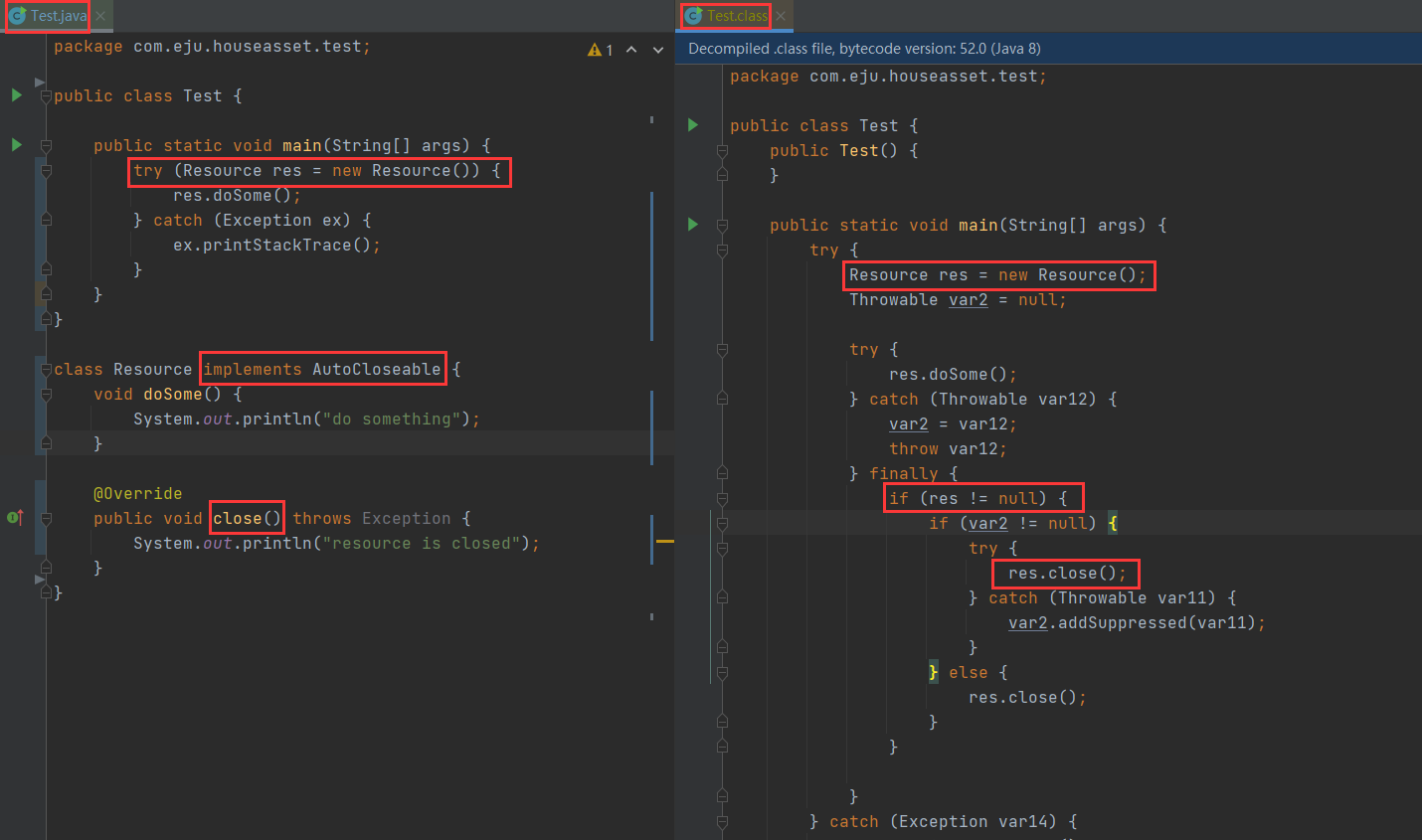推荐链接:
总结——》【Java】
总结——》【Mysql】
总结——》【Redis】
总结——》【Kafka】
总结——》【Spring】
总结——》【SpringBoot】
总结——》【MyBatis、MyBatis-Plus】
总结——》【Linux】
总结——》【MongoDB】
总结——》【Elasticsearch】
Java——》try-with-resource
- 1.概念
- 2.特点
- 3.示例
- 3.1关闭单个资源
- 3.2关闭多个资源
1.概念
try-with-resources 是 JDK 7 中一个新的异常处理机制,它能够很容易地关闭在 try-catch 语句块中使用的资源。
try-with-resources 语句确保了每个资源在语句结束时关闭。
所谓的资源(resource)是指在程序完成后必须关闭的对象。所有实现了 java.lang.AutoCloseable 接口(包括实现了 java.io.Closeable 的所有对象),可以使用作为资源。
2.特点
- 所有实现AutoCloseable接口的类,在try()里声明该类实例的时候,在try()结束后,close()都会被自动调用,这个动作会早于finally里调用的方法。
- 不管是否出现异常(int i=1/0会抛出异常),try()里的实例都会被调用close()。
- 越晚声明的对象,会越早被close掉。
3.示例
3.1关闭单个资源
public class Test {
public static void main(String[] args) {
// JDK1.7、1.8写法:需要在try中声明一个新变量
try (Resource res = new Resource()) {
res.doSome();
} catch (Exception ex) {
ex.printStackTrace();
}
// JDK1.9写法:如果已经有一个资源是 final 或等效于 final 变量,可以在 try-with-resources 语句中直接使用该变量,而无需在 try-with-resources 语句中声明一个新变量
// A final resource
final Resource resource1 = new Resource("resource1");
// An effectively final resource
Resource resource2 = new Resource("resource2");
try (resource1;
resource2) {
// 直接使用 resource1 and resource 2.
}
}
}
class Resource implements AutoCloseable {
void doSome() {
System.out.println("do something");
}
@Override
public void close() throws Exception {
System.out.println("resource is closed");
}
}

3.2关闭多个资源
public class Test {
public static void main(String[] args) {
try(ResourceSome some = new ResourceSome();
ResourceOther other = new ResourceOther()) {
some.doSome();
other.doOther();
} catch(Exception ex) {
ex.printStackTrace();
}
}
}
class ResourceSome implements AutoCloseable {
void doSome() {
System.out.println("do something");
}
@Override
public void close() throws Exception {
System.out.println("some resource is closed");
}
}
class ResourceOther implements AutoCloseable {
void doOther() {
System.out.println("do other things");
}
@Override
public void close() throws Exception {
System.out.println("other resource is closed");
}
}



![HTB:Busqueda[WriteUP]](https://i-blog.csdnimg.cn/direct/440039293e614294be84b7ad3c3e6468.png)
















